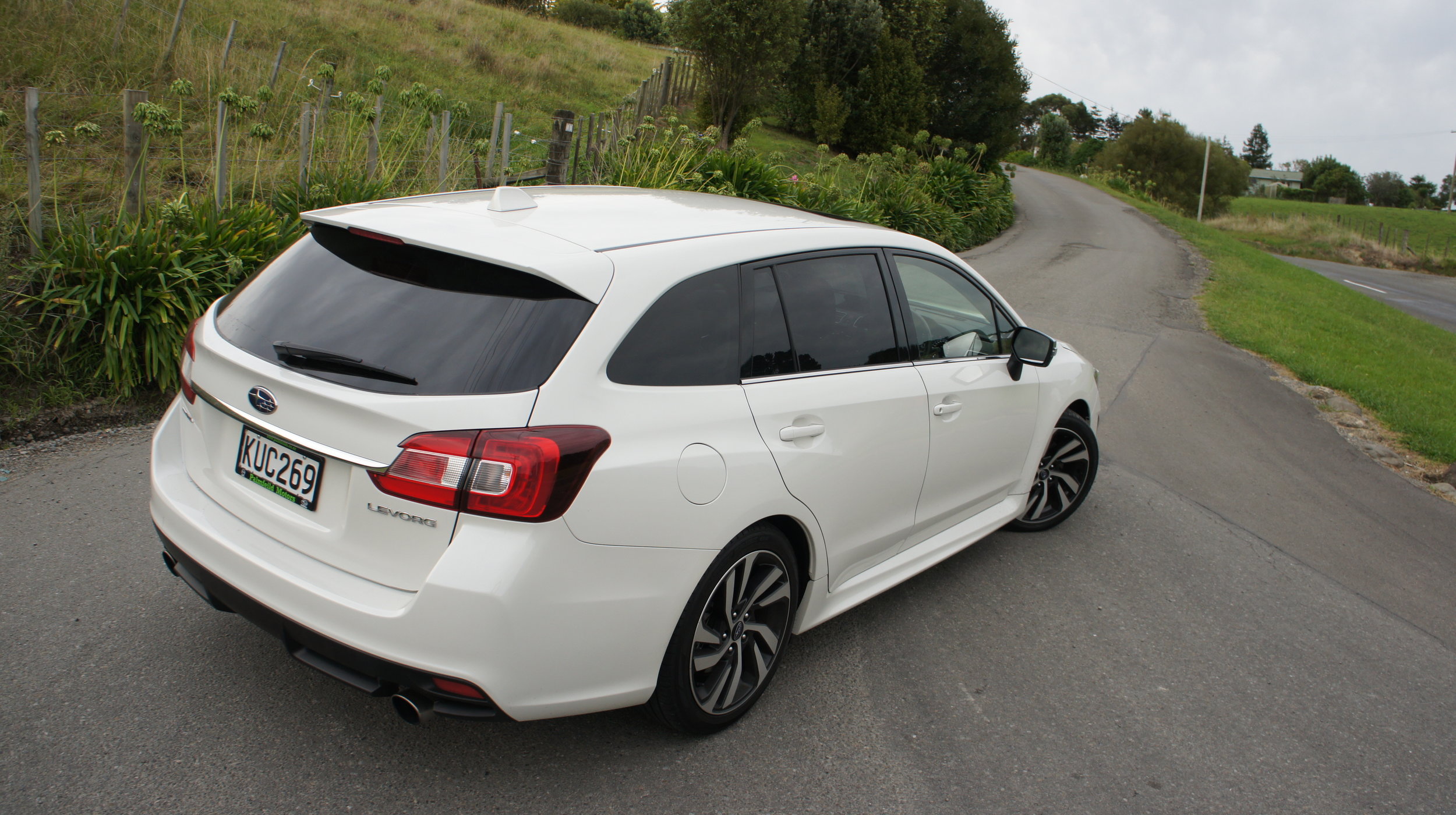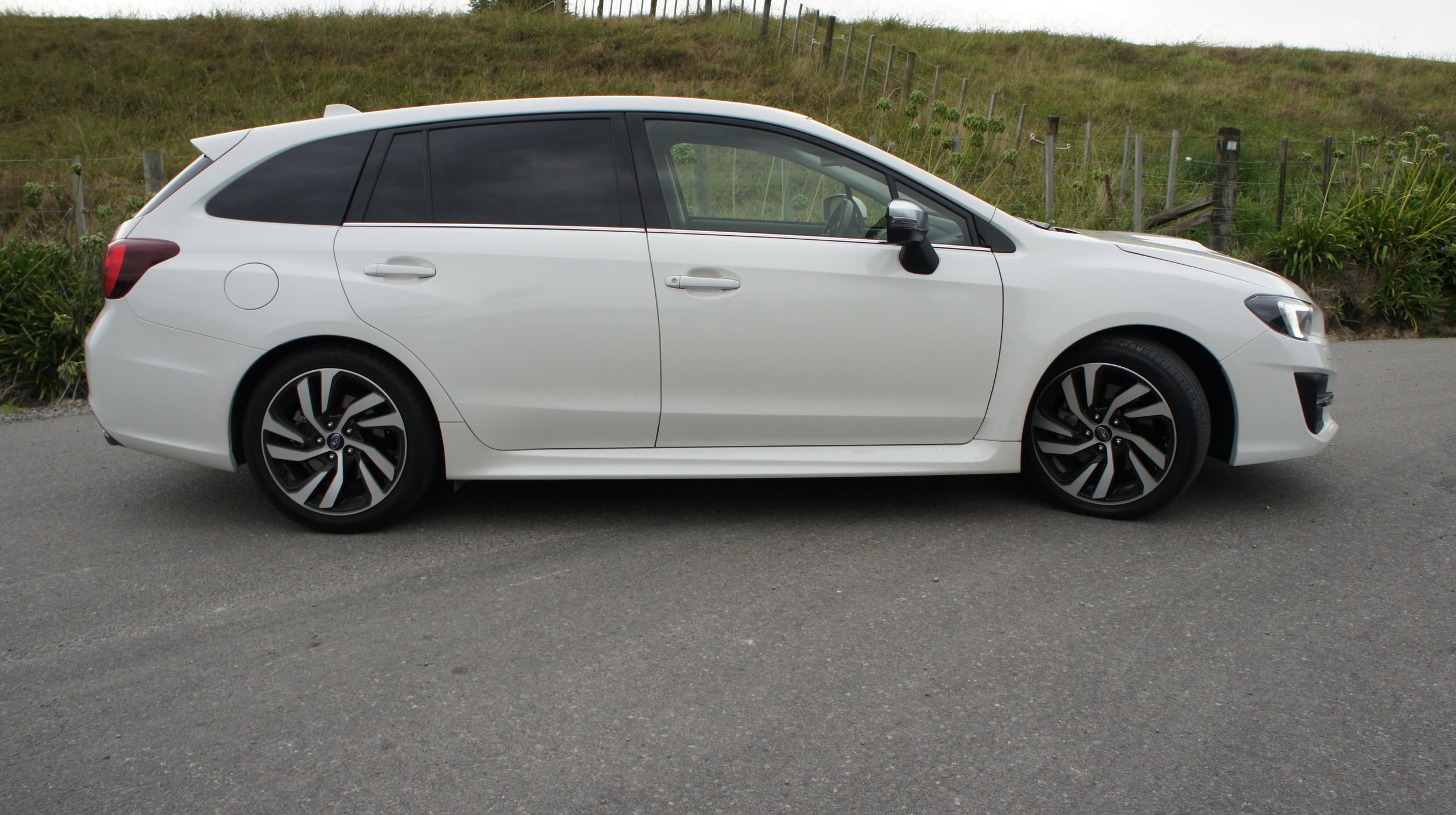Subaru Levorg: Geared up but still gear-less
/An update of this medium sports wagon provides some improvement – but not where it needs it most.




SPIRITUAL successor: Nice line, but a year on, one I’m still having trouble swallowing.
In fact, I’m still wondering if the Levorg GTS ever really has a ghost of a chance of being the car all Legacy GT wagon owners were going to migrate to. Some have, the distributor assures. One I know assuredly has not.
I’m not going to name my mate, but would assure it truly ‘got’ the whole GT ethos: He loved his to bits, kept it fabulously mint but, ultimately, had to let it go. When the Levorg launched, he was first in the local queue.
That first taste drive perplexed him, frankly. It had the look… but in respect to character, just not the same. So, anyway, he figured he would keep the GT for the time being. Then, Subaru announced the refresh driven here. Same drivetrain but a few more frills and a better price. Surely that would be better?
Er, no. His only worry now is why he waited so long to buy a Mazda6 wagon. More disconcertingly, he figures his new choice is more in keeping with the ethos of the car he had before.
Such a traitor, right? Well, that makes two of us; as an owner of the current shape Outback and a somewhat older (but unbreakable) Forester, I’m also in the Subaru fan zone. Yet I couldn’t get excited by this Levorg, either. Well, not excited enough.
That’s a bummer because, at one level, a medium wagon with all-wheel-drive, a performance flavour and yet still some element of practicality would really suit my style. Not least since we – ahem – don’t take our Outback off road anywhere near as often as I thought we might.
To be fair, too, there are ongoing positives. The Levorg still evidences especially smart styling, is even better provisioned now and maintains a great chassis and steering.
However, there’s no point dancing around the ongoing irk. It’s potential as a driver’s car - what the GT was, and what the Levorg should be – is heavily hampered by one unavoidable.
There’s no argument that the sole transmission availed, Lineartronic, is beneficial to economy and efficiency. I’d also not disagree that it suits mainstream Subaru products.
However, I’m just not convinced that a constantly variable transmission, even one of higher-than-usual quality, makes sense in a performance product; the shift quality, though smooth, is simply not slick enough, slurriness coming through even when hand-shifted. Moreover, because it doesn’t allow for particularly high-revving, there’s an overwhelming sense that it dulls the engine’s sharpness.
It doesn’t suit this car and more than it does the WRX, a model that some will call an alternate should they assume the Levorg to be a proxy WRX wagon. Difference between the racy sedan and this new five-door really does seem no more than cosmetic after all, and even if they weren’t so alike on look from some angles, they still hunker down with a common engine, the excellent 197kW/350Nm boxer four.
Anyway, anything with an engine with this much character and reactive punch deserves a transmission of intuition and equal sharpness. That’s potentially a direct-shift gearbox or at least a manual. It’s just not the SLT. More on this in a moment.
Even if the transmission choice was improved, there are still challenges. As a $57,990 proposition, the model does seem to sit uncomfortably close to the Outback, which while the next size up has basic price equality, offers a better cabin layout and more room.
Okay, so that’s the end of my frothy diatribe: If you still have interest in a car whose unusual name comes from an unusual approach to naming – combining the words ‘Legacy’, ‘reVOlution’ and ‘touRinG’ – then be aware that Subaru has meted some changes from the original that do provide improvement.
A new wheel design, new front grille, bumper and headlights are nicely rendered. However, it’s the tech lift that adds more value. A front view camera monitor is a nice addition, so too the high beam and lane change assists, plus it now has rear cross traffic alert. The brilliant camera and radar-driven EyeSight system adds a pre-collision braking system – and, when the car is operating with active cruise control, it has ability to resume travel when a hitherto stationary traffic queue starts going again.
There are still some hiccups and signs of age, such the rear view camera view showing up in the rear view mirror, rather than on the dashboard display, even though the latter is still too small. Also, unlike the Impreza and – in its just-released update form – the Outback, it’s infotainment interface still lacks Apple CarPlay and Android Auto integration and its graphics and operability are also off modern pace. The chunky rocker switches for the seat warmers look old-hat compared to the touch-type ones that Outback owners enjoy and it’s obvious, too, that the smaller car has harder, lower quality plastics.
Hooking in the phone by Bluetooth is easily done but tethering still requires using an awkwardly sited USB port. At least there’s a reasonable-sized cubby to take your phone. There are two other USB outlets for backseat passengers.
The door bins, both front and back, have a holder for a 500ml water bottle, and the pair of cupholders on the centre console are well-dimensioned and deep.
With a sharper tranny, Levorg’s status as a driver’s car would be easily established. The front chairs are sporty in shape and low setting ands the driver is offered a very good relationship with a thick-rimmed, D-shaped steering wheel. Regardless that most people might not even use them, the paddle shifts allow the driver to grab ‘another gear’ without losing too much contact with the steering wheel.
Snugness spreads across the cabin. That the rear seat offers enough leg and knee room to be comfortable when the front row is adult-occupied is thanks in part to the concave shape of the back of the front row chairs.
The boot offers 522 litres of space with the back seats in place and these can be folded easily via pull-activators in the boot. They don’t fold exactly flat, but they do expand the available space to more than 1400 litres. Under the boot floor is a space saver spare that’s still not easily reached; panels and a hard foam cover need to be removed. If you’re tall, watch how you go: The tail-gate doesn’t lift up quite high enough.
Urge to start a ‘givealittle’ page allowing this engine into a better marriage starts when it fires up and, when it has warmed sufficiently, you move it from the Intelligent (translation: Eco) mode and into the performance-themed Sport Plus setting: Do this and there’s audibly more edge to the burbly exhaust.
Fair dues, Sport Sharp mode also offers the best of the driving modes available. It alters the transmission massively; the ‘shifts’ are more aggressive, and it will to some extent ‘hold’ in a ‘gear’ if you ask it to, though ultimate will upshift itself in self-protection. The car feels fastest, and as alert as it is ever going to be, in this setting.
And yet …
Anyone who has never driven the WRX with a manual gearbox will recognise how good could become even better. Basically, the three pedal, shift the stick yourself approach allows more involvement, more intoxication. More addiction. Because, after all, this engine IS a potent force; get the revs above 4000rpm and it bangs in a smack-in-the-back surge that’s hard to forget. But the trick is to keep in touch with it.
You cannot do that with Lineartronic; it’s just too sedative in its operation, wanting to go easy just you want to go hard and, beyond that, simply doesn’t have the finesse to enable a particularly intimate car-driver relationship.
End of subject? One last thing. Subaru reckons on SLT providing the means for this performance mill being tamed to drink at just 8.7 litres per 100km, an impressively low return for an engine with something of a reputation for being a drinker. Unfortunately, that level of parsimony wasn’t achieved on test.
There is one improvement to the driving side, and that’s with the ride. It used to be quite firm. Too much so, ultimately. Subaru has revisited with a retune that is not at all detrimental to the handling balance, but certainly improves the composure on deteriorated surfaces. It tracks beautifully, but with no brittleness now. Job well done.
On top of this, there’s the brilliance of symmetrical all-wheel-drive. With all paws gaining grip, it is a predictable and confident machine. The Levorg, like the WRX, gets Vehicle Dynamics Control which features Active Torque Vectoring and traction control, which keep it from progressing into understeer because the system is reducing torque to the outside front and allocating it to the outside back wheel (as well applying some brake, limited-slip differential, and engine control) to help turn the car back in towards the corner.
Chance of further change for the Levorg is remote and, realistically, would not alter the bigger picture, any way. Road-bound sports wagons are niche these days; the greater interest by far is in sports utility vehicles and, of course, these are a Subaru speciality. Levorg is placed in a narrow corridor between the big-hitting Outback and Forester; the first is Subaru’s biggest seller. The incoming new generation of the second is tipped to achieve No.1 in the future.
Meantime, Subaru’s latest Viziv concept car is expected to provide the basis for the next-gen WRX, due within two years. Intriguingly, the design study has presented as a sports wagon. Join the dots.















